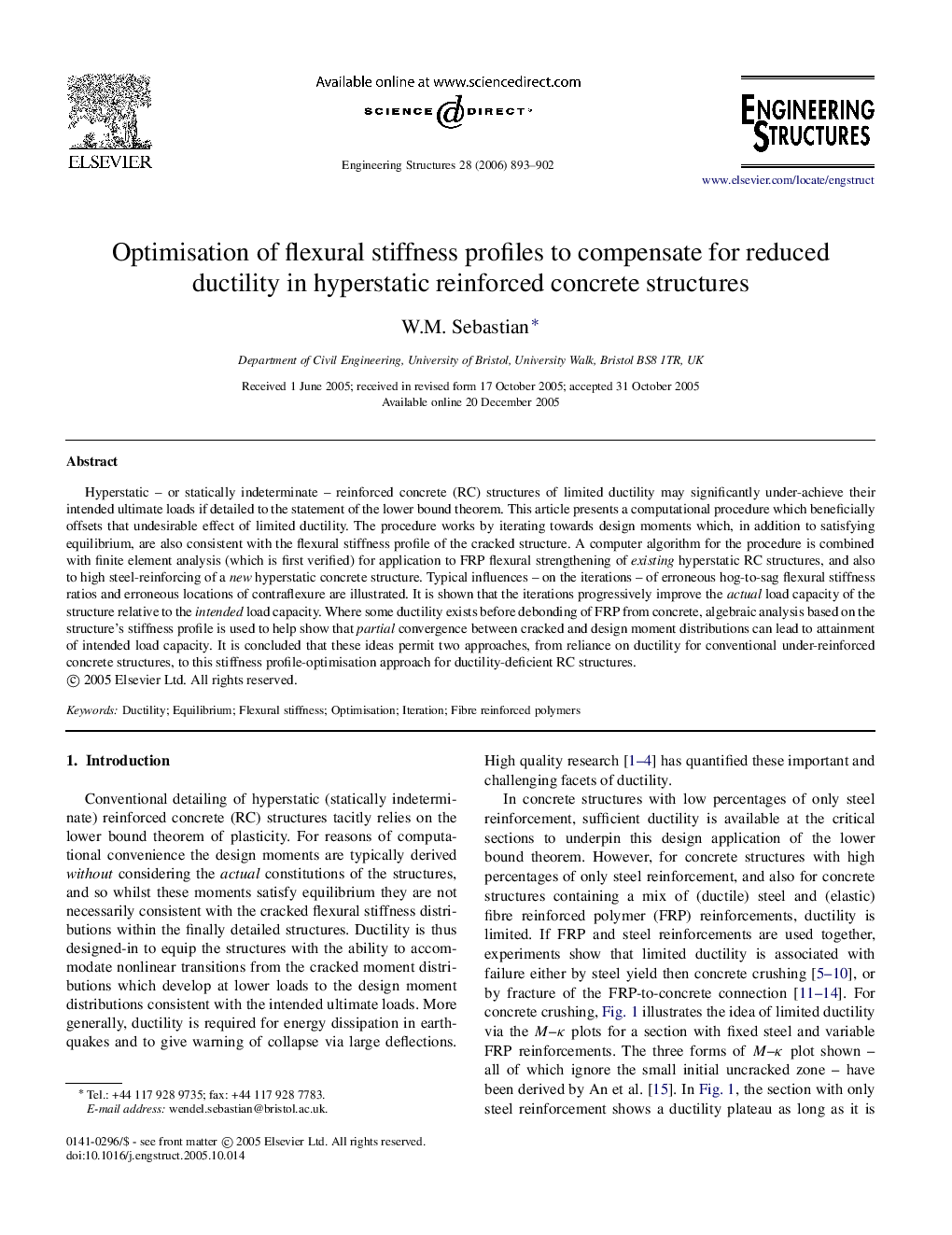| Article ID | Journal | Published Year | Pages | File Type |
|---|---|---|---|---|
| 269491 | Engineering Structures | 2006 | 10 Pages |
Hyperstatic–or statically indeterminate–reinforced concrete (RC) structures of limited ductility may significantly under-achieve their intended ultimate loads if detailed to the statement of the lower bound theorem. This article presents a computational procedure which beneficially offsets that undesirable effect of limited ductility. The procedure works by iterating towards design moments which, in addition to satisfying equilibrium, are also consistent with the flexural stiffness profile of the cracked structure. A computer algorithm for the procedure is combined with finite element analysis (which is first verified) for application to FRP flexural strengthening of existing hyperstatic RC structures, and also to high steel-reinforcing of a new hyperstatic concrete structure. Typical influences–on the iterations–of erroneous hog-to-sag flexural stiffness ratios and erroneous locations of contraflexure are illustrated. It is shown that the iterations progressively improve the actual load capacity of the structure relative to the intended load capacity. Where some ductility exists before debonding of FRP from concrete, algebraic analysis based on the structure’s stiffness profile is used to help show that partial convergence between cracked and design moment distributions can lead to attainment of intended load capacity. It is concluded that these ideas permit two approaches, from reliance on ductility for conventional under-reinforced concrete structures, to this stiffness profile-optimisation approach for ductility-deficient RC structures.
